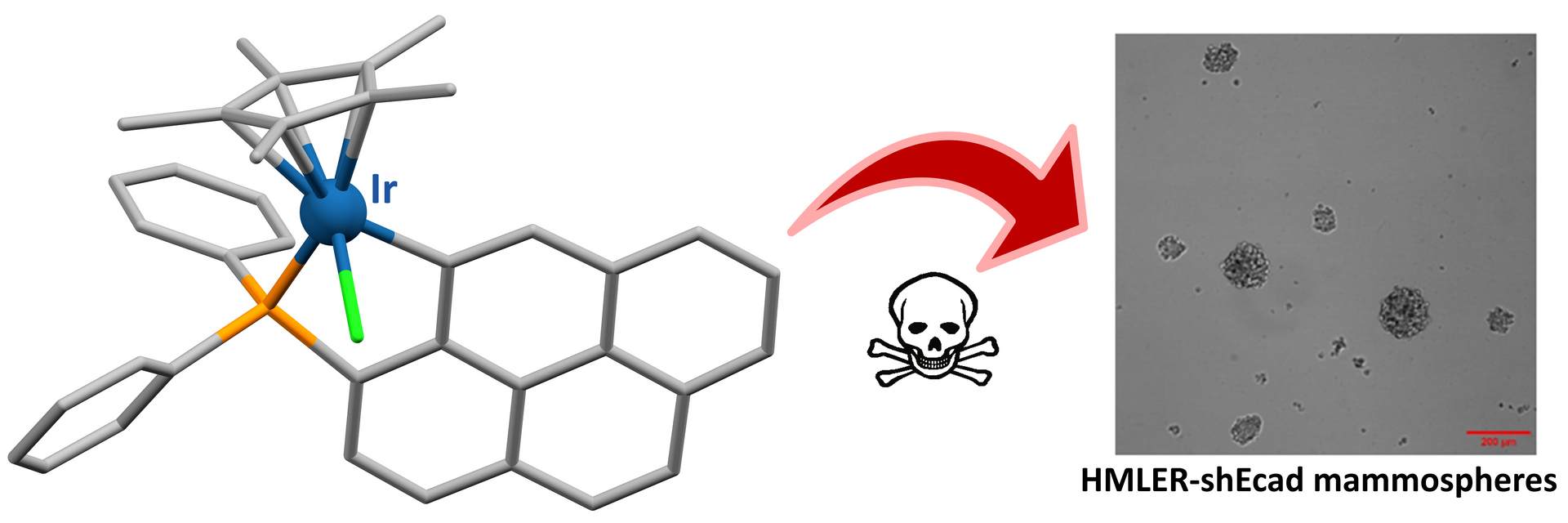Cyclometalated half-sandwich iridium(iii) and rhodium(iii) complexes as efficient agents against cancer stem-cell mammospheresd
Dana Josa, Piedad Herrera-Ramírez, Xiao Feng, Albert Gutiérrez, David Aguilà, Arnald Grabulosa, Manuel Martínez, Kogularamanan Suntharalingam and Patrick Gamez
Inorg Chem. Front., 2025, 12, 2404-2416.
Four cyclometalated complexes, namely [IrCl(η5-pentamethylcyclopendadienyl)(k2C-diphenyl(1-pyrenyl)phosphane)] (1) and [RhCl(η5-pentamethylcyclopendadienyl)(k2C-diphenyl(1-pyrenyl)phosphane)] (2), and their DMSO-coordinated counterparts [Ir(η5-pentamethylcyclopendadienyl)(kS-dmso)(k2C-diphenyl(1-pyrenyl)phosphane)]PF6 (1·DMSO) and [Rh(η5-pentamethylcyclopendadienyl)(kS-dmso)(k2C-diphenyl(1-pyrenyl)phosphane)]PF6 (2·DMSO), were synthesized and fully characterized, including their single-crystal X-ray structures. DNA-interacting 1 and 2 exhibits IC50 values in the range 0.53–0.79 μM against bulk breast cancer cells and breast cancer stem cells (CSCs), i.e., HMLER and HMLER-shEcad cells. The complexes are up to seven times more active than salinomycin and up to nine times more active than cisplatin. Moreover, 1 and 2 are very effective (in the micromolar range) against mammospheres obtained from single cell suspensions of HMLER-shEcad cells, 1 being thrice more toxic than 2 and up to 4.5-fold more potent than cisplatin and salinomycin. In depth mechanistic studies revealed that 1 induces necrosis, which is potentially dependent on necrosome formation and independent of ROS concentration. The efficacy of 1 against breast CSCs can be enhanced by co-treatment with PARP-1 inhibitors.


